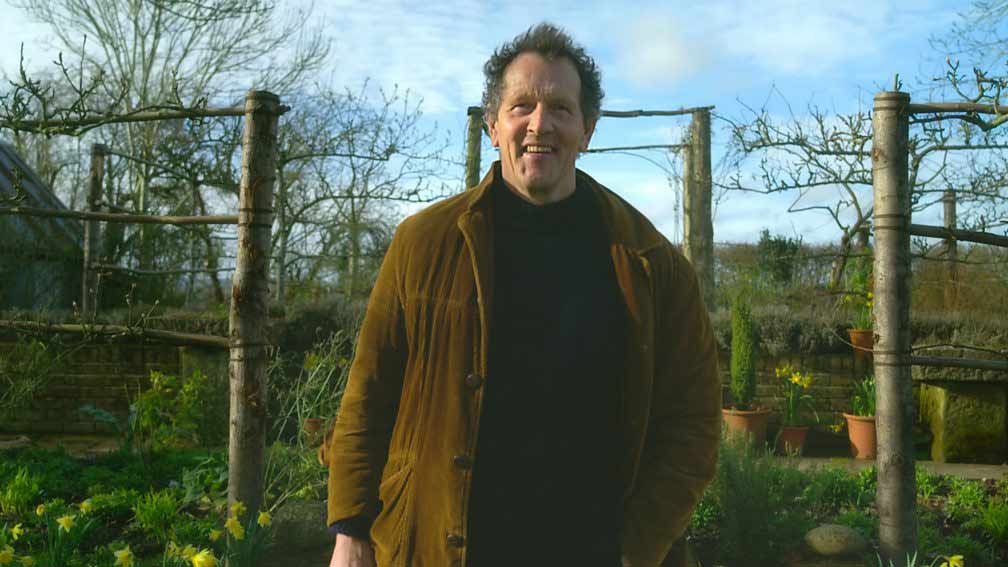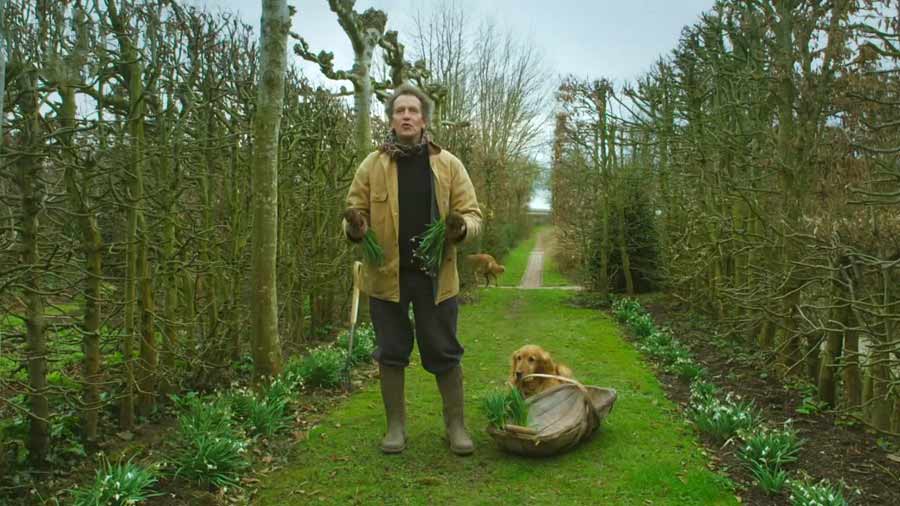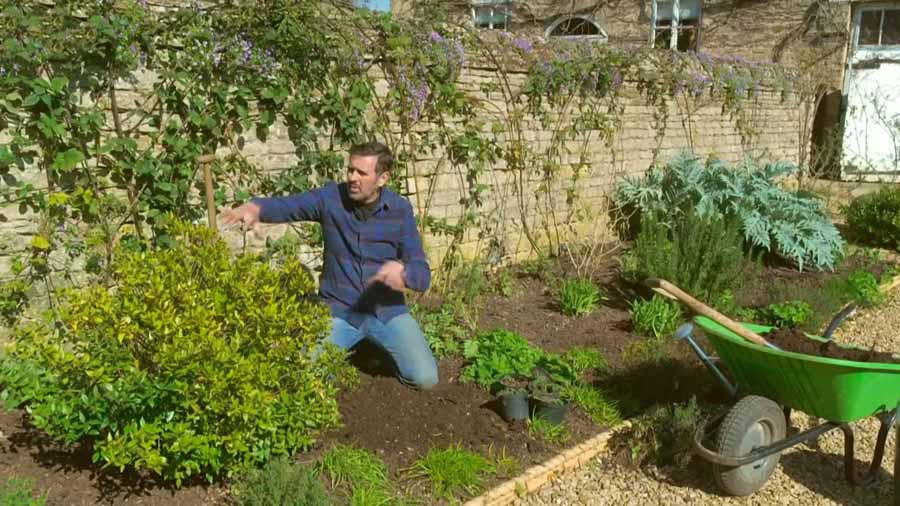Gardeners World episode 21 2020: With the summer garden in full swing, Monty Don shows how to stake dahlias, sows seeds of perennials and celebrates an abundant vegetable harvest.
The team meet a landscape designer in Cornwall who creates gardens that are not only sustainable but also beautiful and edible and go to Wales to meet a gardener whose garden reflects memories of her childhood home in Jamaica.
There is a second chance to see Carol Klein visit Aberglasney Gardens in Carmarthenshire to look at their stunning collection of summer flowering thalictrum, and Mark Lane shows the adaptive tools he uses for planting and weeding in his garden in Kent.
And there are more viewers’ videos showing what people have been getting up to in their own gardens.
Gardeners World episode 21 2020
How to grow dahlias
Dahlias put on a show in summer and autumn. They come in a wide range of colours from pastels to brights. Very floriferous, they’re also good for cutting. You can buy dahlia plants in summer that are potted up and in full growth. Alternatively, buy dormant tubers in bags in the garden centre in spring or pre-order dormant tubers and rooted cuttings from specialist nurseries for spring delivery.
To grow on tubers and cuttings, you’ll need a frost-free place like a greenhouse with heating or at least insulating fleece, depending on where you live in the country and how cold it is in spring. Bedding dahlias are often seed-raised and will flower that same season. They usually come in a mix of colours or a single colour strain that’s not as uniform as plants-raised from cuttings.
Perennials
Popular, diverse and versatile, perennials fill our gardens with colour and interest in every season, and there’s a huge range of easy-to-grow, free-flowering options to choose from. They’re available in many shapes and sizes, with flowers in every colour imaginable, and when planted in borders or containers they can perform for many years.
Some of our most beautiful garden plants are perennials, grown for their colourful flowers or attractive foliage. Perennials don’t have a woody structure, unlike shrubs and trees. Deciduous types die down to the roots every autumn, while evergreen perennials keep their leaves all year round.
There are perennials to suit all soil types and garden conditions, from sun-seeking salvias to shade-loving hostas, drought-tolerant succulents to aquatic waterlilies.
Successional sowing
Gluts and shortages common to most vegetable gardeners. However, with some planning and by sowing seed little and often in batches, it is possible to ensure plants are ready to harvest in succession throughout the growing season.
Successional sowings are usually made at fortnightly intervals, but this may vary depending on environmental conditions. In practice, this means that lettuce may only need to be sown every three weeks in early spring, increasing to once a week in warm, moist summer weather.
Rather than sowing every fortnight automatically, it may be wise to make new sowings when plants from the preceding sowing are well-developed. As a rough guide, this is when leafy crops have about four true leaves, when peas are 5cm (2in) high and beans about 10cm (4in) tall.
Lettuce
Choose the right varieties and you can have lettuce almost all year round. There are so many types of lettuce to choose from – all with different colours, flavours and textures – that salad need never be boring! There are two main types of lettuce – hearting lettuces have a dense centre, while loose-leaf lettuces have open leaves and no heart. You can also grow a variety of salad leaves that can be picked while young and tender.
Thin seedlings as soon as the first true leaves appear and continue until the plants are 30cm (12in) apart. The seedlings you thin out can be washed and eaten too. Water when the soil is dry; the best time to water is in the early morning. Early in the year sparrows can be a problem as they find young lettuce plants irresistible. Protect with fleece, chicken wire or similar.
Blossom end rot
Dark blotches on the ends of aubergine, tomato and pepper are alarming, but do not mean the end of the crop. This is called blossom end rot and is caused by lack of calcium in the fruits. By making minor adjustments in watering you will usually be able to protect subsequent fruits from blossom end rot.
Blossom end rot is a physiological problem, caused by adverse growing conditions rather than a pest or disease. Certain vegetables that form large fruits, such as aubergines, peppers and (most often) tomatoes are particularly susceptible.
Blossom end rot shows as a circular patch, varying in colour from greenish brown to black, at the end of the fruit that had the flower (the end furthest from the plant). As this patch increases in size it becomes sunken so that the fruit has a flattened appearance at the affected end. The blackened patch varies greatly: in some fruits it is only 1cm (1/2in) across, while in others it is 2.5cm (1in) or more in diameter.




